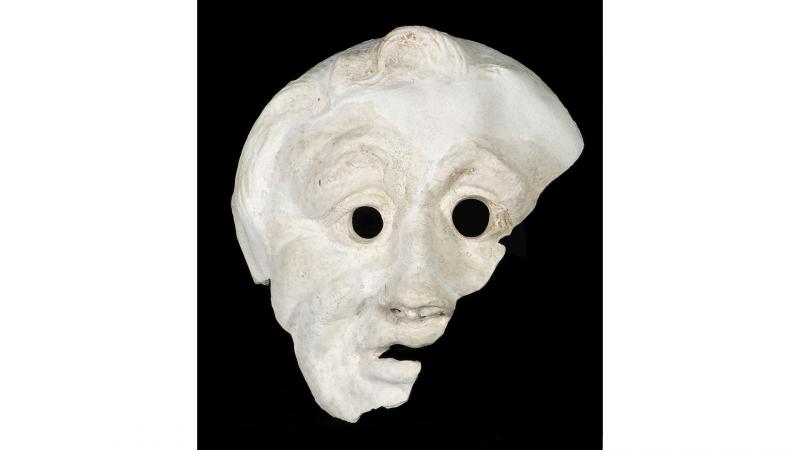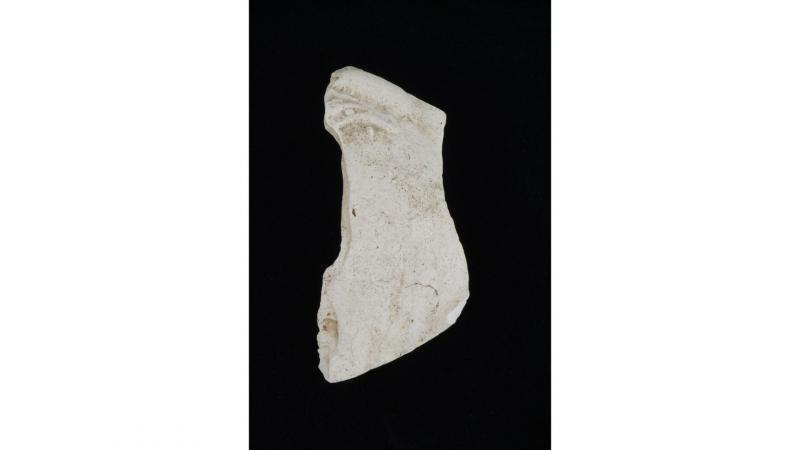This fragmentary white terracotta mask represents wildlife. The artefact, which was probably from a potter's workshop on Rudolf Platz in Cologne, was unearthed by the teacher Firmin Hénaux in 1910, during the partial excavation of the Roman villa of Chardeneux-Bonsin (Namur). Despite the advanced age of the discoveries, a large portion of the archaeological material discovered remained unpublished; the numerous ceramic shards have only been cleaned and sorted very recently. In one block of compact earth that had not yet been inspected, we discovered that the shards contained a fragment of white terracotta that obviously belonged to a second mask! The two fine, deep cheek wrinkles that can be seen on this shard suggest that it is a fragment of a grotesque mask, a very common type that depicts a bald male head with caricature features. These life-size masks were part of the decoration of urban homes and Roman villas.
Numéro d'inventaire FLORA
GC.ARC.01c.1910.001240

